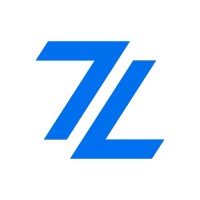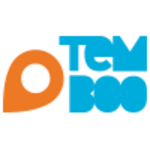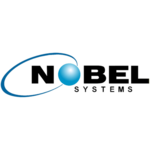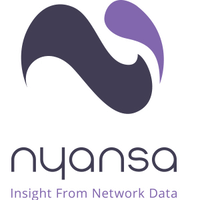Description

Bridgera IoT

Zerynth
Comprehensive Overview: Bridgera IoT vs Zerynth
Bridgera IoT and Zerynth: Overview
a) Primary Functions and Target Markets
Bridgera IoT:
- Primary Functions: Bridgera IoT offers a customizable Internet of Things (IoT) platform focusing on end-to-end solutions that include data collection, processing, visualization, and real-time analytics. Its platform is designed to simplify the development of IoT applications and offers a variety of solutions, including device management, connectivity, data storage, and application enablement.
- Target Markets: Bridgera targets a wide range of industries such as healthcare, logistics, transportation, smart cities, and manufacturing. Its flexibility and customization offer businesses in these sectors the ability to develop tailored IoT solutions suited to their specific needs.
Zerynth:
- Primary Functions: Zerynth provides a platform aimed at accelerating the development of IoT and Industry 4.0 applications. Its primary offerings include a suite of development tools that facilitate Python and C programming on microcontrollers, cloud integration, and device management.
- Target Markets: Zerynth primarily targets developers, enterprises, and IoT solution integrators who are focused on industrial IoT, consumer electronics, and smart devices. Its ease of use and adaptability make it particularly appealing to small and medium-sized enterprises (SMEs) and startups.
b) Market Share and User Base
-
Bridgera IoT: Bridgera's market share is modest compared to major IoT platforms like AWS IoT, Microsoft Azure IoT, or Google Cloud IoT. However, it holds a niche market presence due to its highly customizable solutions, attracting businesses seeking tailored services rather than off-the-shelf solutions. Its user base is more regional and industry-specific.
-
Zerynth: Zerynth also holds a niche in the IoT development tool market. While it does not compete with the tech giants in terms of market share, it has a loyal user base among developers and SMEs in Europe and other regions interested in rapid IoT prototyping and deployment, thanks to its beginner-friendly platform and comprehensive development suite.
c) Key Differentiating Factors
-
Customization vs. Development Focus:
- Bridgera IoT offers extensive customization options, allowing businesses to create bespoke IoT applications. This flexibility is its key differentiator, particularly suitable for clients who have specific or complex needs that cannot be met by standard solutions.
- Zerynth, on the other hand, focuses on the development aspect, providing robust tools for programming and prototyping. Its strength lies in easing the development process with its platform that supports extensive device compatibility and a dual-language programming approach (Python and C).
-
User Experience and Accessibility:
- Bridgera IoT targets businesses already engaged in or planning IoT projects and may require consultation and customization during initial phases.
- Zerynth is designed for an easier entry into IoT and appeals to developers by reducing complexity, offering a rich environment for rapid application development and deployment.
-
Target Industry Depth:
- Bridgera provides deep industry-specific solutions and has a strong emphasis on service-based customization, making it suitable for enterprises with very specific industry requirements.
- Zerynth focuses more broadly on enabling IoT application development across various industries by emphasizing the ease of learning and integration, thus appealing to wider, less niche-focused markets.
In conclusion, while both Bridgera IoT and Zerynth offer platforms that facilitate IoT development and deployment, they cater to different needs within the IoT ecosystem. Bridgera excels in customizable, industry-specific applications, while Zerynth provides developer-friendly tools for agile IoT solution creation.
Contact Info

Year founded :
Not Available
Not Available
Not Available
Not Available
Not Available

Year founded :
2015
+39 050 806 8225
Not Available
Italy
http://www.linkedin.com/company/zerynth
Feature Similarity Breakdown: Bridgera IoT, Zerynth
When comparing IoT platforms like Bridgera IoT and Zerynth, it’s important to analyze their core features, user interfaces, and any unique capabilities that set them apart. Here's a breakdown based on their known functionalities:
a) Core Features in Common:
-
Device Management:
- Both Bridgera IoT and Zerynth offer robust device management capabilities, allowing for the provisioning, monitoring, and updating of IoT devices.
-
Data Collection and Storage:
- They enable data collection from IoT devices and provide options for secure data storage.
-
Real-Time Analytics:
- Both platforms support real-time data analytics, empowering users to gain insights and make data-driven decisions.
-
Scalability:
- They are designed to scale according to the needs of the user, whether handling a few devices or thousands.
-
Security:
- Security features such as data encryption, secure data transmission, and user authentication are provided by both.
b) User Interface Comparison:
-
Bridgera IoT:
- Known for its intuitive and customizable user interfaces which can be tailored to meet specific business needs.
- Offers dashboards that are user-friendly and visually oriented, allowing for easy monitoring and control of IoT systems.
-
Zerynth:
- Provides an integrated development environment (IDE) that facilitates the development and management of IoT applications.
- Interfaces may be more geared toward developers, focusing on ease of programming and integration.
Bridgera IoT might appeal more to end-users and business stakeholders with its customizable dashboards, whereas Zerynth’s IDE could be more favorable for developers looking for robust coding and hardware integration environments.
c) Unique Features:
-
Bridgera IoT:
- Custom Solutions: Often noted for offering bespoke IoT solutions tailored specifically for different industries like healthcare, logistics, and more.
- End-to-End Solutions: Provides capabilities that stretch from hardware integration to data visualization and third-party application integrations.
-
Zerynth:
- Python Programming Support: Allows for the use of Python for programming IoT devices, which is relatively unique and attractive for developers familiar with the language.
- Versatile Firmware: Allows for flexible firmware solutions that can support various IoT hardware, encouraging greater adaptability in device management.
In conclusion, while both platforms share common IoT functionalities, Bridgera IoT tends to focus on delivering industry-specific, end-to-end solutions with robust data visualization tools, whereas Zerynth stands out with its developer-focused environment and support for Python programming, catering to the flexibility and coding needs of IoT developers.
Features

Device Management
Data Analytics
Integration Capabilities
Security Features
Data Analytics and Reporting
Real-Time Device Monitoring

Data Collection and Analysis
Flexible Software Integration
Efficient IoT Device Management
Best Fit Use Cases: Bridgera IoT, Zerynth
Certainly! Bridgera IoT and Zerynth are both platforms tailored for IoT solutions, but they cater to different needs and use cases. Here's a breakdown of their best fit use cases and how they cater to various industry verticals and company sizes:
Bridgera IoT
a) Best Fit for Businesses or Projects:
- Enterprises Seeking Custom Solutions: Bridgera IoT is ideal for businesses looking for highly customized IoT solutions. Its flexibility allows it to be tailored to meet specific business needs and integrate seamlessly with existing systems.
- Asset Tracking and Management: Companies in logistics, transportation, or supply chain management can benefit significantly from Bridgera IoT’s capabilities in asset tracking, real-time monitoring, and data management.
- Healthcare Monitoring Systems: Bridgera IoT is a strong choice for projects requiring remote patient monitoring and healthcare data management due to its reliability and security features.
- Smart Cities and Infrastructure: Governments or organizations involved in managing urban infrastructure can utilize Bridgera IoT for monitoring utilities, transportation systems, and other civic amenities.
d) Industry Verticals and Company Sizes:
- Large Enterprises and Industries: Given its focus on custom solutions, Bridgera IoT is suitable for large enterprises that have specific requirements and the resources for bespoke development.
- Diverse Industries: It caters to various industries such as healthcare, logistics, smart cities, and industrial manufacturing.
Zerynth
b) Preferred Scenarios:
- Rapid Prototyping and MVP Development: Zerynth is a great option for startups or businesses in need of quickly developing a prototype or Minimum Viable Product (MVP) due to its easy-to-use platform and tools.
- Embedded IoT Solutions: Companies focused on building embedded IoT devices will find Zerynth advantageous due to its support for programming in Python/C on microcontrollers.
- Industrial IoT (IIoT) Applications: Zerynth is well-suited for manufacturing or industrial applications where there's a need for integrating IoT capabilities into existing machinery.
- Educational and Research Projects: Its simplicity and support for popular programming languages make it a good choice for educational purposes and research projects.
d) Industry Verticals and Company Sizes:
- Small to Medium-Sized Enterprises (SMEs): Zerynth is ideal for small and medium-sized companies looking for cost-effective IoT solutions.
- Focus on Education and Innovation: Universities and research institutions can leverage Zerynth's tools to teach IoT concepts or conduct innovative research.
- Industries with Embedded Systems: Companies in industries like manufacturing, automotive, or electronics that need agile integration with embedded systems can benefit from Zerynth's offerings.
In summary, Bridgera IoT is best suited for large enterprises needing custom, secure, and scalable IoT solutions in diverse industries, while Zerynth appeals to innovative startups, SMEs, and industries working with embedded systems focusing on rapid development and prototyping.
Pricing

Pricing Not Available

Pricing Not Available
Metrics History
Metrics History
Comparing teamSize across companies
Conclusion & Final Verdict: Bridgera IoT vs Zerynth
To provide a comprehensive analysis of the Bridgera IoT and Zerynth platforms, it's important to weigh the different aspects that contribute to their overall value, pros and cons, and specific recommendations for potential users. Here's a structured conclusion and verdict based on common factors considered in IoT solutions: feature set, ease of use, scalability, support, and cost-effectiveness.
a) Considering all factors, which product offers the best overall value?
Best Overall Value: Zerynth
Zerynth tends to offer the best overall value for users looking to integrate IoT solutions, especially if they prioritize flexibility and ease of use for embedded systems. With its comprehensive platform tailored for programming microcontrollers and connecting them to the cloud, Zerynth stands out for its versatility in supporting a variety of hardware and its robust toolset for developing IoT applications.
b) Pros and Cons of Choosing Each Product
Bridgera IoT:
-
Pros:
- Customizable Solutions: Bridgera IoT provides highly customizable IoT solutions, which can be tailored to specific business needs, making it ideal for enterprises with unique requirements.
- End-to-End Service: Offers holistic services that include development, deployment, and management of IoT systems.
- Strong Support: Known for its support system that assists in troubleshooting and optimizing IoT deployments.
-
Cons:
- Complex Implementation: Its custom solutions might demand more time and resources to implement effectively, especially for smaller businesses with limited technical expertise.
- Potentially Higher Costs: Customization and end-to-end services may come with higher costs compared to more standardized solutions.
Zerynth:
-
Pros:
- Ease of Use: Provides a user-friendly integrated development environment (IDE) and supports Python, making it accessible for both beginners and experienced developers.
- Versatile Hardware Support: Compatible with a wide range of microcontrollers and development boards, enhancing flexibility in hardware selection.
- Cost-effective: Offers tools suitable for rapid prototyping and development, which can reduce time to market.
-
Cons:
- Limited for Large-scale Deployments: While great for prototyping, users might find limitations when scaling to large deployments or handling complex enterprise-level systems.
- Focused on Development: Primarily centers on development and integration rather than full lifecycle management of IoT solutions.
c) Specific Recommendations for Users Trying to Decide Between Bridgera IoT vs Zerynth
-
For Enterprises with Specific Needs:
- Choose Bridgera IoT if your enterprise requires a highly tailored IoT solution with extensive customization and support. This is particularly beneficial if you have the budget for a more involved deployment process and need robust end-to-end services.
-
For Developers and SMEs (Small to Medium-sized Enterprises):
- Opt for Zerynth if you're looking for a development platform that supports rapid prototyping with a variety of hardware and does not require deep customization or extensive infrastructure setup. It's particularly suitable for smaller-scale projects and teams looking to leverage Python in IoT development.
-
Budget Considerations:
- Consider Zerynth for a more cost-efficient approach, particularly if you’re working within a constrained budget and need to minimize initial costs.
In conclusion, the choice between Bridgera IoT and Zerynth largely depends on the scale and specificity of your IoT projects, your budget, and your technical capacity. Each offers distinct advantages, aligning with different types of users and organizational needs.
Add to compare
Add similar companies




